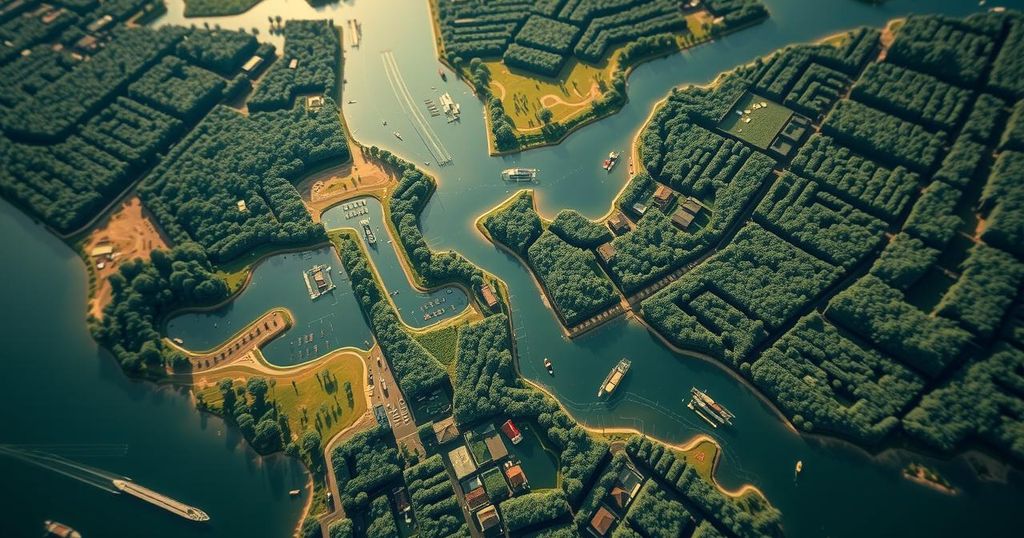The article discusses the significant internal migration in the Brazilian Amazon during the 20th century, driven by economic opportunities related to infrastructure projects and gold rushes. Major population increases occurred in regions like Rondônia and Acre, largely due to internal displacement. The governance of land distribution and ongoing socio-economic tensions are also highlighted, along with the role of key figures like Chico Mendes in advocating for community rights and environmental conservation.
Migration to the Brazilian Amazon in the 20th century has been heavily influenced by various socio-economic factors, including the gold rush and the development of infrastructure projects such as mining and hydroelectric facilities. Notably, Rondônia’s population surged from 100,000 in 1972 to over one million by 1990, primarily due to internal migration driven by the search for new economic opportunities. Residents are increasingly moving from rural areas to urban centers in search of better jobs, often linked to construction and infrastructure projects.
The flow of migrants has emanated from distinct regions in Brazil, notably the Northeast, where poverty and limited opportunities drive emigration, the South, where families seek to continue their farming heritage, and the Central West, which has seen an organic expansion of agricultural frontiers. Internal migration has been historically catalyzed by infrastructural developments and agricultural initiatives, such as the construction of major highways and the establishment of BR-364, which facilitated access to previously unoccupied lands.
In the latter half of the 20th century, the Brazilian government promoted colonization, with agencies like the Instituto Nacional de Colonização e Reforma Agrária (INCRA) distributing land parcels to encourage settlement. Despite facing challenges in securing land allotments, many migrants established themselves as posseiros, or squatters, and took up agricultural or ranching activities, thereby transforming the landscape of contemporary Amazonia.
Conflict has often arisen from the integration of large-scale landowners and smallholders, particularly in areas like Acre, where the expansion of cattle ranching threatened traditional rubber tapping livelihoods. Notable figures such as Chico Mendes emerged, advocating for the rights of local communities and environmental conservation. Despite the progress and advocacy, the legacy of these migrations has led to significant socio-economic tensions that persist in the Amazon.
More recently, the mining sector, particularly in the Carajás region of Pará, has continued to attract a wave of migrants seeking economic opportunities, although this has prompted extensive deforestation linked to various industrial activities. In this context, migration remains an enduring characteristic of Amazonian development, shaping both the economy and the environment of the region.
This article explores the complex dynamics of migration to the Brazilian Amazon throughout the 20th century, focusing on internal migration patterns that have emerged as a result of economic factors, infrastructure development, and government policies. The Brazilian government’s initiatives in land distribution and the establishment of new infrastructure, such as highways and hydropower projects, significantly contributed to population changes in regions like Rondônia and Acre. Furthermore, the interaction between environmental conservation, land ownership conflicts, and socio-economic challenges provides a critical perspective on the impacts of migration in the Amazonian context.
In conclusion, the migration waves into the Brazilian Amazon have significantly transformed the region’s demographics and socio-economic landscape over the 20th century. Driven by economic opportunities and facilitated by government initiatives, this migration has contributed to both urbanization and substantial conflicts over land use. Moreover, the ongoing environmental challenges associated with these migratory patterns underline the need for sustainable policies that balance development with ecological preservation.
Original Source: news.mongabay.com






